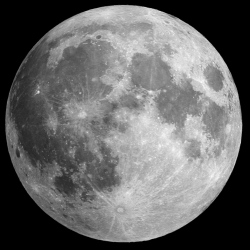
The project is part of a $30m prize from Google offered to a team that can send video back from the moon. The robot has already been shown to potential investors, including Apollo 9 astronaut Rusty Schweickart. It works in tandem with an Oculus Rift virtual reality headset.
The scientists from Carnegie Mellon have teamed up with space firm Astrobotic to compete for the Google Lunar XPrize, which requires a team to land a robot on the Moon, move it 500m and send back video to Earth. Astrobotic Technology, which is a spin-off from Carnegie Mellon, has signed a deal with SpaceX – the private space company set up by Elon Musk – to use its Falcon 9 rocket to launch the robot. It is due to take off in 2016.
"The vision was simple – let anyone on Earth experience the Moon live through the eyes of a robot," explained team leader Daniel Shafrir. "We weren’t just going to go to the Moon. We are going to bring the Moon back," he added. The telepresence robot, nicknamed Andy after university founder Andrew Carnegie, can be controlled by an operator’s head. Using an Oculus Rift headset, the movements of the user’s head are tracked and sent back to Andy’s camera so that it will match where the user is looking.
